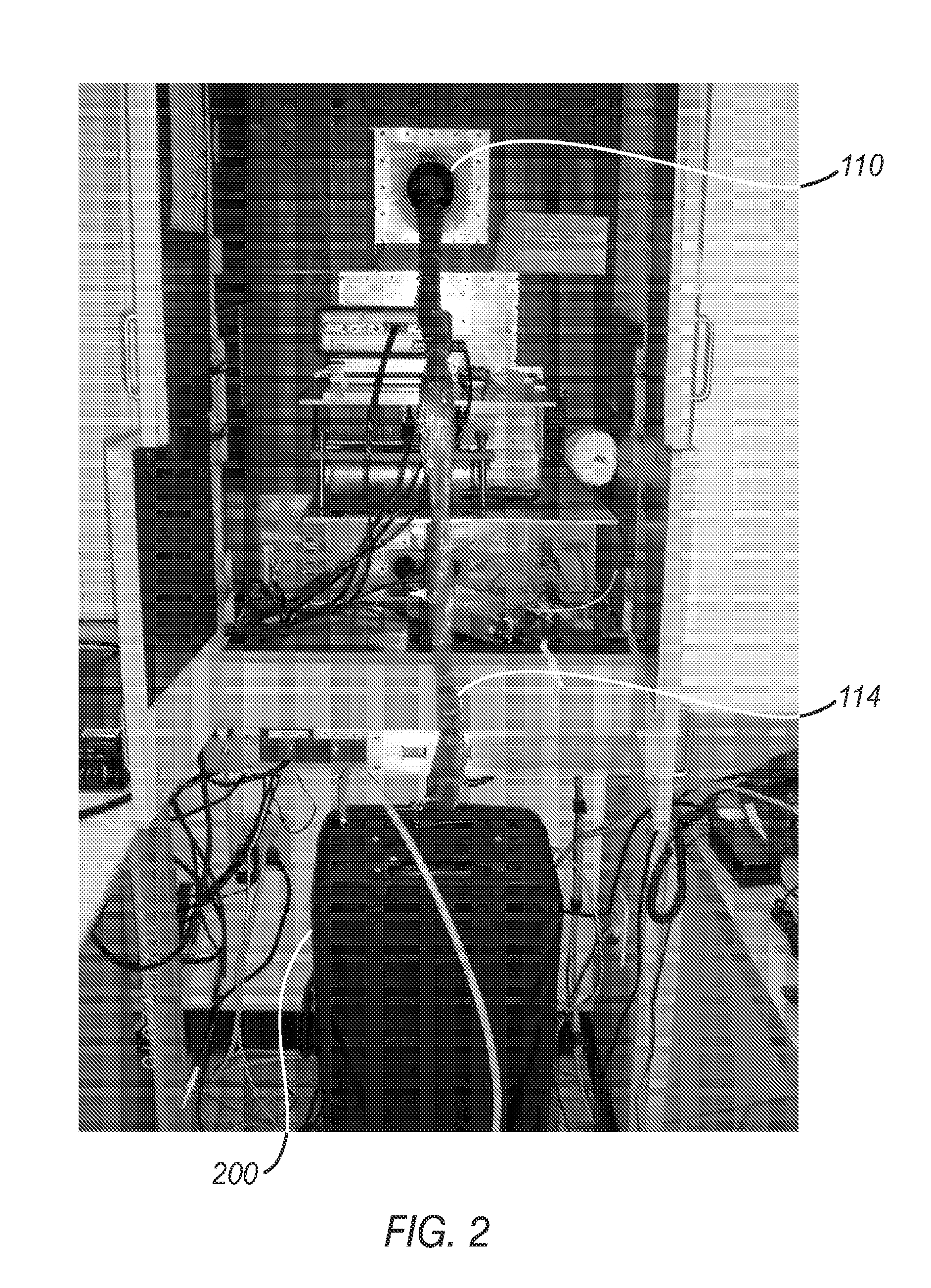Wearable device for noninvasive tactile stimulation
a non-invasive, wearable technology, applied in the direction of tactile signalling systems, repeater circuits, instruments, etc., can solve the problems of laborious and time-consuming, prior systems can only accomplish very limited tasks,
- Summary
- Abstract
- Description
- Claims
- Application Information
AI Technical Summary
Benefits of technology
Problems solved by technology
Method used
Image
Examples
examples
Experimental Setup
[0070]Patches of soft foam padding can be used to support the mask over the face, and 3M Transpore tapes can be used to stabilize the mask. Foam padding can be inserted between the mask and coil to minimize head motion. Computer-controlled lines of air puffs (50-100 ms; compressed air at 25-50 psi out of the regulator) can be delivered to the body surface via 64 25-ft tubes ( 1 / 16-in I.D.) running through the waveguide. In one embodiment, a subject wearing a WTSD can be instructed to close their eyes in complete darkness during the entire session and can be instructed to attend to the locations and irregularity of air puffs without making overt responses. The hisses of air puffs can be masked by white noise radio delivered via MR-compatible headphones and inside which subjects also wore ear plugs.
Use in Finding Somatosensory Area Boundaries in Humans
[0071]Sensory cortical areas preserve topological relations among sensory inputs. In human visual cortex, ‘phase-enco...
PUM
 Login to View More
Login to View More Abstract
Description
Claims
Application Information
 Login to View More
Login to View More - R&D
- Intellectual Property
- Life Sciences
- Materials
- Tech Scout
- Unparalleled Data Quality
- Higher Quality Content
- 60% Fewer Hallucinations
Browse by: Latest US Patents, China's latest patents, Technical Efficacy Thesaurus, Application Domain, Technology Topic, Popular Technical Reports.
© 2025 PatSnap. All rights reserved.Legal|Privacy policy|Modern Slavery Act Transparency Statement|Sitemap|About US| Contact US: help@patsnap.com



